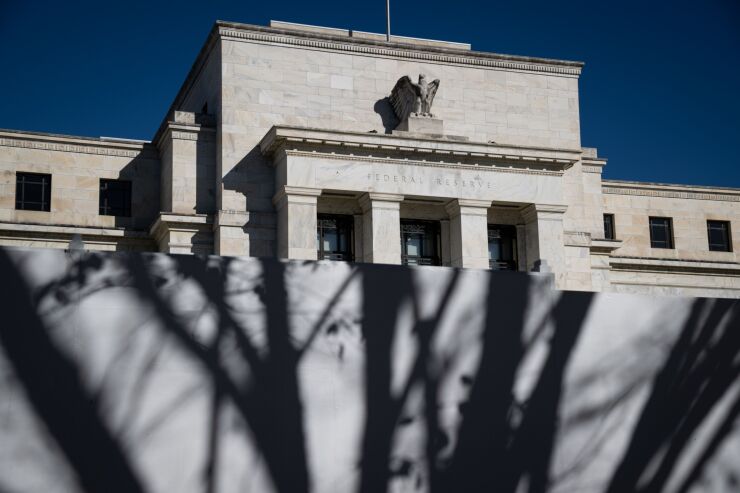
Federal Reserve Chair Jerome Powell
Critics pointed out negative impacts of the new capital requirements, which range from stifling economic growth and innovation by business borrowers to the disproportionate impact they would have on traditionally underbanked communities and communities of color, particularly in the context of homeownership. Further, it was noted the new requirements would have unintended consequences, like driving many borrowers to less regulated nonbank lenders. Now, Powell says to expect Basel III revisions by the end of the year.
This is an excellent example of an independent agency understanding both the process and its varied constituents. While guardrails are needed to prevent a repeat of the 2008 financial meltdown, as written, Basel III endgame requirements will both hamstring banks' ability to generate new business and negatively impact consumers. Clearly, the Federal Reserve Board is trying to strike a balance that minimizes risk-taking — thereby ensuring the resilience of the banking system — while preserving market liquidity, even if it means going back to the drawing board.
Coupled with other actions the Fed has taken in recent months, there seems to be an emerging ethos to trust the process rather than reshape it, unlike in the Dodd-Frank era. In essence, the Fed has followed the regulatory process as it is conceptually laid out in U.S. administrative law. And a pragmatic, measured approach to enhanced capital requirements is exactly what banks and credit consumers need right now.
Signs of this approach surfaced last fall when the Fed clarified its position on synthetic risk transfers as a capital mitigation strategy and credit-linked notes, or CLNs, in particular. Although the Fed did not go as far as some banks would have liked, the
This FAQ demonstrated that the Fed was sympathetic to banks' needs to free up capital and also seemed to indicate that they were aware of the probable negative impacts on borrowers, especially underbanked consumers with less robust lending options. At the same time, by taking a case-by-case approach, the Fed indicated that it would be closely monitoring the market for direct CLNs to avoid some of the risk-taking that occurred in 2008. This is a very practical approach that brings the U.S. in line with Europe, where CLNs are already in widespread use as a capital relief strategy and significant risk trade, or SRT.
The Federal Reserve Board governor and frequent regulatory critic says it would be appropriate for the U.S. to deviate from the agreed-upon international standards to reflect "unique characteristics" of the American banking system.
Synthetic securitization volume has been growing steadily since 2018, when the European Central Bank expressly permitted CLNs for capital relief. To date, CLNs haven't triggered any bank failures in Europe. CLNs are safer than their precursor credit default swaps because the issuer receives an upfront cash payment in exchange for the risk transfer. If there is a default event on the underlying asset, the issuer is simply relieved of its obligation to repay the note purchaser, either in full or in part, depending on the terms. The upfront cash payment eliminates the risk that the note purchaser will be unwilling or unable to reimburse the bank, which is what happened in certain instances in 2008. Furthermore, CLNs allow banks to remain compliant with the post-2008 requirement to hold some of the risk, one of the Dodd-Frank reforms that discourages banks from generating overly risky assets.
Still, the Fed's decision on CLNs has its critics, including Sheila Bair, who served as chair of the Federal Deposit Insurance Corporation during the Great Recession. Bair has argued against the use of synthetic securitization as it transfers risk to less regulated entities, like private equity and hedge funds. Bair and other critics believe that widespread use of CLNs and other SRTs could undermine the overall health of the banking system and credit markets, especially since many private equity and hedge funds now have substantial lending operations of their own, a dynamic that was not significant during the Great Recession.
Bair's concerns are most likely overblown. The U.S. banking system doesn't function in a vacuum, and the Fed's action is bringing the U.S. in line with peer markets. For both its willingness to rethink the proposed capital requirements and its approach to SRTs, the Fed deserves credit for working within the process structure revamped in response to the 2008 financial crisis.
Of course, with Basel III endgame requirements delayed, perhaps indefinitely, the question becomes whether banks will pursue CLNs and other SRTs as aggressively as was anticipated earlier this year. Certainly, some banks will want to wait for new capital rules before taking action. But the biggest banks set to be most heavily impacted by Basel III — including U.S. Bank, Morgan Stanley, Santander Holdings, Huntington Bank and JPMorgan Chase — have all initiated risk transfer trades in recent months.
In light of the Fed's thus far practical approach, there is a very good chance that there will still be some increase in the capital requirements, albeit in a more measured manner. Given the likely increase and the huge appetite for SRTs right now, banks have an incentive to complete these deals beyond just capital relief.






